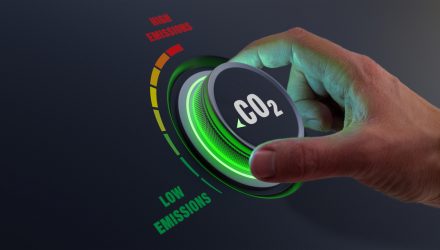Climate change-driven investing is about much more than rising temperatures. It encompasses corporate and governmental efforts to reduce carbon output, industry-level implications of those efforts, and the long-term economic benefits of applying more scrutiny to climate initiatives.
As such, investors may want to consider going beyond equities to tap into the long-term potential of the carbon-reduction investment thesis. One way of accomplishing that objective is with exchange traded funds such as the KraneShares Global Carbon Offset Strategy ETF (KSET).
KSET follows the S&P GSCI Global Voluntary Carbon Liquidity Weighted Index. That gauge is comprised of CME-listed Nature-Based Global Emission Offsets (N-GEOs) and Global Emission Offsets (GEOs) futures contracts. The exposures offered by the KraneShares ETF are pertinent at a time when more private and public entities are prioritizing lower output.
KSET Has Long-Term Allure
For patient investors, KSET could be an ideal avenue for tapping into a new global regime of carbon-reducing plans.
“Climate risk challenges span all industries, leaving businesses striving to find effective solutions. However, through best practices, technology, proper funding, and effective public policy, companies and countries alike can lower or prevent carbon-intensive consumption. In short, opportunities lie in fighting back. Government policymakers agree, especially in Europe and the U.S., where a wave of historic public programs and funding is unfolding,” according to Alliance Bernstein research.
Potentially bolstering the case for KSET is the multi-pronged approach to carbon reduction some countries and corporations are taking. For example, some cutting plans include the involvement of companies, governments, and asset owners.
Another supporting factor for KSET’s long-term prospects is the prioritization of reduction here in the U.S. In fact, lowering carbon is a centerpiece of the Inflation Reduction Act, which passed in 2022.
“The U.S. Inflation Reduction Act includes a record $369 billion to lower carbon emissions by 40% over the next decade. Among its business incentives are generous tax credits for adopting wind and solar renewable energy into operations, so the math now makes solar more economical than traditional power sources,” added Alliance Bernstein.
Add to that, each of the 27 members of the European Union (EU) back similar carbon-reduction efforts, though they haven’t released uniform funding details as of yet. Still, there’s clear support among some of the world’s largest developed economies for paring output and that could boost KSET going forward.
“We think both policy measures should steadily widen the low-carbon investment opportunity set,” concluded Alliance Bernstein.
For more news, information, and analysis, visit the Climate Insights Channel.

